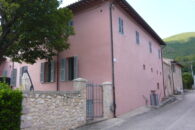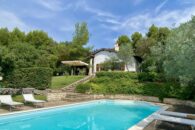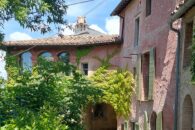Conveniently located right in the centre of Italy, bordering with Tuscany, Lazio and the Marche, Umbria is a region of many landscapes, natural resources and artistic treasures. A much used slogan defines it ‘the green heart of Italy’ due to the incredible amount of natural areas it comprises.
Umbria is the heart of Italy also because it can be easily reached from any direction, thanks to its efficient road network: the region is crossed by the A1 motorway, the main artery between Milan and Rome, and by the E-45, the expressway running between Cesena and Orte, one of the international routes from northern to southern Italy. The international airports of Rome and Ancona are only within 2 hours driving distance. Perugia airport is only about 30-40 mins from any town in Umbria. The train system is also quite good.
This privileged condition of centrality has also shaped the character of its people, open and hospitable, as has been witnessed by the many foreign travellers who over the centuries have visited Umbria and dreamed of settling here. Modern visitors particularly appreciate the special quality of life enjoyed in the Umbrian towns and countryside.
The south of the region, where we are located, is renowned in Italy and abroad for the Spoleto Arts Festival, which takes place in June – July of every year. Most of the villages are mediaeval, built on top of the hills for defensive purposes, overlooking the valley down below. The lack of coastline is made up by the Lake Piediluco. In its calm blue waters are mirrored the surrounding hills covered with oaks, an ideal spot for rowing and canoeing. Another source of water nearby is the River Nera, which flows through the valley that is named after it, the Valnerina. The landscape is one of great natural beauty, rich in flora and wildlife, dotted with wooded mountain slopes and tumbling streams. This area has been relatively isolated until recently when a new tunnel was built under the mountain, opening up a new virgin market for lovers of old houses, full of forgotten and unknown corners , a delight for the visitor in search of something a little different.
The climate in Umbria is very good, with an early spring and late autumn. In winter the cold, crisp mornings are counterbalanced by a bright blue sky and glowing sun. It rarely snows and on the rare occasions when it does, the roads get cleared immediately. Summers are hot, but at night time it always cools down, allowing one a restful sleep.
Among the pleasures to be enjoyed in Umbria are its food, including delicacies such as the Umbrian black truffle, cheeses, lentils, all coming from the Valnerina; the extra virgin olive oil, of specially good quality in the Spoleto area; the wines, with the red Sagrantino di Montefalco which has recently acquired a new fame and the renowned Orvieto Classico.
Of great interest are the two interdisciplinary museums dedicated to oeno-gastronomic products, the Wine Museum and the Olive and Oil Museum located in Torgiano and, in the environs of Brufa, the road known as the Strada del Vino e dell’Arte. Also, recently this area of Umbria, a committee composed of the municipalities of Trevi as a frontrunner, Assisi, Spello, Foligno, Campello sul Clitunno and Spoleto, has submitted to FAO an application for the hillsides between Assisi and Spoleto to get Heritage Status for their extraordinary landscape composed of olive trees that have been shaped by the age-old interaction of farmers with the environment.
A special mention is also due to the Umbrian hand made ceramic and majolica from Deruta, which boasts the Museo Regionale della Ceramica di Deruta, with masterpieces bearing witness to local production from 1290 to the present day; and the textile tradition of hand-woven fabrics, a still vital production.







